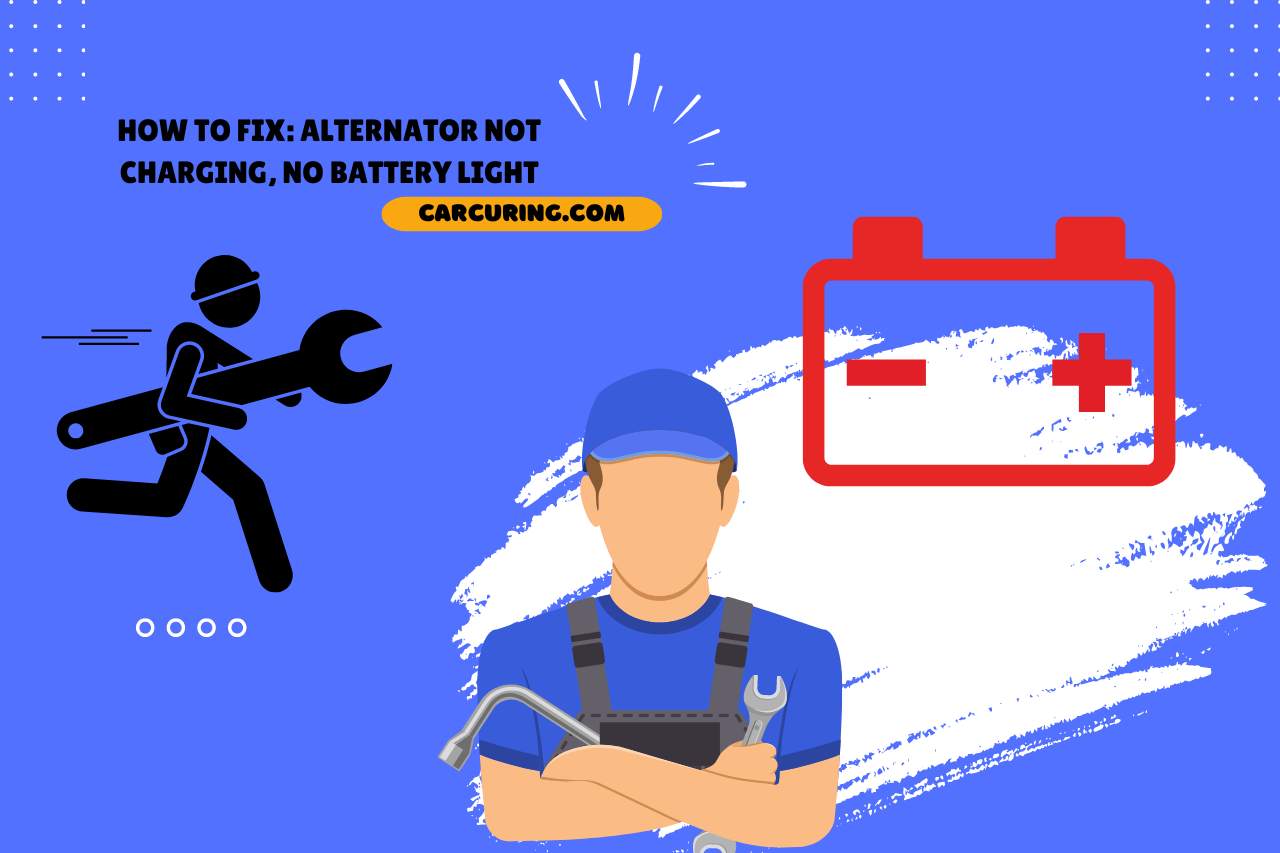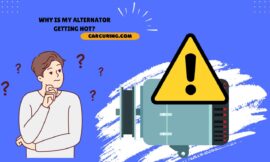Are you experiencing the issue of the alternator not charging? Most of you might notice that the battery light is also absent on your dashboard, leaving you doubts about the alternator’s functionality. No more doubts; today, we will clarify what causes the alternator and battery light to act like this. What’s more, we have listed potential workarounds to try when you face this issue. So, move on!
Alternator Not Charging, No Battery Light; Why?
If the alternator is not charging the battery, and there is no battery light illuminated on the dashboard, it could indicate a few potential issues within the electrical system. Let’s discuss them one by one.
- Faulty Alternator: The alternator may be malfunctioning, leading to a lack of charging. Internal issues, such as a failed voltage regulator, diodes, or other components, could be the cause.
- Faulty Battery Light or Warning System: The dashboard battery light may be faulty, so there will not be a warning even when there’s an issue.
- Loose or Damaged Belt: A loose or damaged alternator belt may prevent the alternator from properly charging the battery. Thus, you have to ensure the belt is properly tensioned and in good condition.
- Bad Battery Connection: Loose or corroded battery terminals and connections can disrupt the charging process, too.
- Faulty Wiring: Damaged or corroded wiring between the alternator, battery, and the charging system can hinder proper charging.
- Blown Fuse: A blown fuse in the charging system can disrupt the flow of electricity from the alternator to the battery.
- Faulty Voltage Regulator: The voltage regulator, responsible for controlling the alternator’s output, can have a fault. If it fails to regulate voltage, the alternator may not charge the battery correctly.
- Internal Alternator Issues: Internal issues within the alternator, such as a burnt-out rotor or stator, can lead to a lack of charging.
In case you have this issue, it’s recommended to have the charging system thoroughly inspected by a qualified mechanic to diagnose and address the specific issue. Remember that ignoring charging issues can lead to a drained battery and potential breakdowns.

How to Fix: Alternator Not Charging, No Battery Light
If your alternator is not charging, and there is no battery light on the dashboard, it can be a bit challenging to diagnose since there are several interconnected parts. Follow these steps to troubleshoot and potentially fix the issue:
- Check Alternator Belt: Ensure the alternator belt is in good condition and properly tensioned because a loose or damaged belt can lead to inefficient charging.
- Inspect Battery Terminals: Check the battery terminals for tightness and cleanliness. If there are corroded terminals, you can use some white vinegar to clean them.
- Test Battery Voltage: Use a multimeter to test the voltage of the battery. If the battery voltage is significantly below the normal range, it may need to be charged or replaced.
- Inspect Wiring and Connections: Next, examine the wiring and connections between the alternator, battery, and other components. Look for damaged or corroded wires and repair or replace them as needed.
- Check Fuses: Inspect the fuses related to the charging system. A blown fuse can interrupt the flow of electricity. So, you will have to replace any blown fuses with the correct rating.
- Test Alternator Output: With the engine running, use a multimeter to measure the voltage output directly at the alternator. Check whether the voltage is within the specified range. If there’s no voltage, your alternator may be faulty.
- Inspect Voltage Regulator: The voltage regulator controls the alternator’s output. If it fails, the alternator may not charge the battery correctly. Therefore, test the voltage regulator to ensure it is regulating voltage properly.
- Check Battery Light Bulb: Ensure the bulb in the battery light on the dashboard is not burnt out. If it is, a replacement will be the solution.
- Scan for Diagnostic Trouble Codes (DTCs): Use an OBD-II scanner to check for any diagnostic trouble codes related to the charging system. Some issues may not trigger the battery light but can be identified through codes.
- Professional Inspection: If you’re unable to identify or address the issue, it’s advisable to seek the assistance of a qualified mechanic. Then, they will perform advanced diagnostics, test the alternator under load, and recommend appropriate repairs or replacements.
Since there is no battery light indication, it’s crucial to carefully inspect and test various components to pinpoint the cause of the charging issue.
You May Also Like
- Can a Bad Alternator Cause a Misfire? Unraveling the Mystery!
- Can Water Damage the Alternator? (Essential Tips and Advice)
- Why is My Alternator Smoking? Unveiling the Mystery!
- Does a Bad Alternator Drain your Battery? Drain Issues!
- How to Lubricate an Alternator? Maintaining Your Alternator!
- Can You Jump Start A Car With A Bad Alternator? (Do’s and Don’ts)
- Does a Bad Alternator Make a Clicking Noise? Solving the Mystery!


